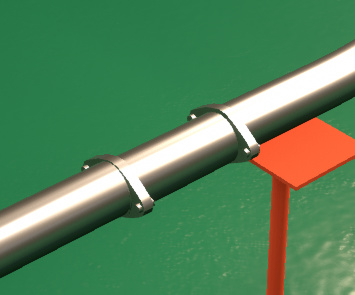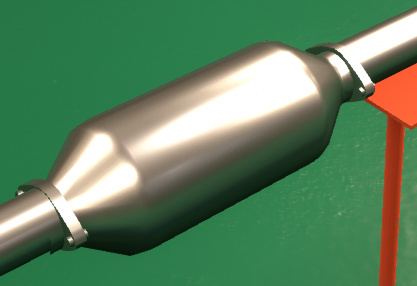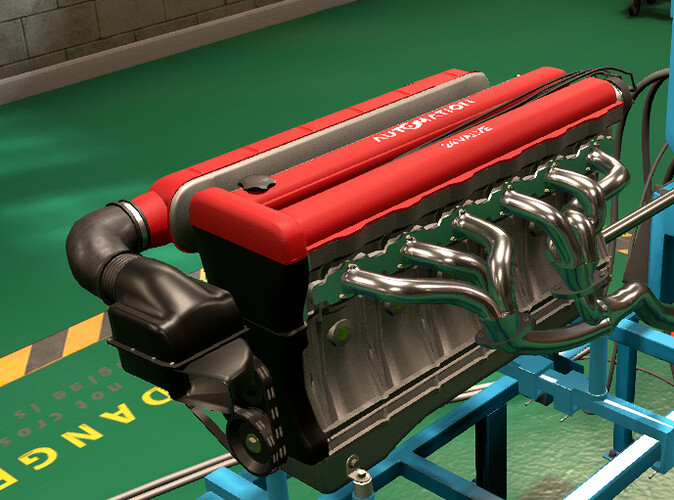Great Guide, especially for beginners!  Even after 200 hours of playing automation, I still got something out of it.
Even after 200 hours of playing automation, I still got something out of it.
It’s very well researched 
Update on the turbo tuning side: Something’s changed in turbos (actually I’m kind of late to that).
In short, the ideal range for the compressor is 0.6-0.75 roughly. Turbine can stay in the 0.82-0.86 sort of area, AR should be maxed out unless you’ve got a minimum sized turbine and need to restrict the turbine more. I’ve updated the guide to reflect that.
As usual, what I say isn’t law, but a good starting point. Obviously experiment and learn how your changes effect your engine.
Engine Design Guide: Part 7 - Exhaust systems
Finally, after all this time we get to the end of the combustion cycle. Just writing this, I feel exhausted.
Mandatory pun complete. Let’s go.
Exhausts are surprisingly important. Mostly for luxury cars, but the exhaust setup can help you make big gains in comfort, power, fuel economy and weight reduction.
Exhaust Headers

These are the first thing the exhaust gasses go through, you can make some significant gains here in power and weight reduction. Also they look pretty if you go for the expensive ones. This is only available to choose if your engine is naturally aspirated, since if it’s turbo you have to have Short Cast. All headers are available from 1946.

A thing to note is that you’ll likely not notice any real flow issues here until the late game. Or maybe just a quirk with the way I build engines. To improve flow here, you can either change the headers or make the engine bigger. Bear in mind with better flow means a louder engine, so it might not always be best to have a totally free flowing exhaust system. A turbo engine won’t ever have any flow restrictions here.
Cast Log - This is your cheap and nasty one. Only for use in the most cheap and mass produced cars, even the markets will usually go away from cars that use this. In the campaign, this is probably quite useful for getting the very maximum cars out of your factories. With this you’ll get serious flow issues.

Short Cast - What 90% of your cars will use. Your standard header for cars everywhere that aren’t totally cheap and garbage. Note that it’s slightly heavier than Cast Log, and with higher material costs.
Tubular - Slightly sporty and lighter than short cast, with better flow. Probably best to have on sporty cars that aren’t too high end. Lighter than Cast Log, but with slightly worse emissions. Interestingly is lower on material costs.

Long Tubular - This is getting to the expensive to manufacture point. Still usable on widely produced car, but I wouldn’t recommend it unless performance is needed. Somehow even cheaper on material costs, worse on emissions still.
Race Tubular - This is your custom built, perfectly shaped for your engine exhaust head to perfectly manage the gasses. It cannot be mass produced, so use only on low production and limited cars such as hypercars. A large jump in production units and it takes a month longer to engineer.
General Exhaust

Single - A single exhaust pipe. Nothing really to say here.
Dual - Two exhaust pipes, only available on V or Boxer engines. With this you can just double the maximum power possible with the engine, but bear in mind that it can get heavy quickly. Recommended for cars that need power and to be quiet, but where weight isn’t an issue.
Bypass Valves - A simple way of keeping a car quiet for comfort, but at the same time avoid a sportiness penalty for having a quiet car. You won’t get a bonus for loudness, but at least won’t lose sportiness. Unlocks in 1999.
Exhaust Diameter

This will help determine exhaust flow. A larger exhaust will help increase power if there’s a serious restriction, but if there isn’t a restriction you won’t see a power gain. This can also significantly affect loudness.

If your exhaust is too big you will actually reduce power and efficiency, while restricting the exhaust will lose power you will also gain efficiency as you improve low end power.
If you go from a single to dual exhaust it’s not as simple as just halving the size of the exhaust. You get bigger and bigger gains in flow the bigger your exhaust is.
Catalytic Converter

This is the main way you’ll reduce emissions. You cannot use one of these if your car is using leaded fuel. Right now in the game there doesn’t really seem to be a point in using them, since emissions are irrelevant to the markets as far as I can tell. For choosing one of these look at real cars and figure out what would make most sense.

None - No Catalytic Converter. Largely unrealistic for most cars. To be honest I recommend looking at real cars of the era you’re making an engine in and deciding for yourself if you need to have one or not.

Two-way - The worst possible option in this section. Bad at everything, ruins flow so you make no power. At least it makes the engine quieter. If you have to use one, upgrade to a three-way as soon as possible. Unlocks in 1972.

Three-way - Something actually decent. This is probably the best catalytic converter for most cars. Good flow, lowers emissions more than a two-way too, and at a decent price. Unlocks in 1978

High Flow Three-way - The best catalytic converter for performance engines where power matters, but you want realistic emissions equipment. It’s a little expensive in material costs and production units. Unlocks in 1984.
First Muffler

Choose the muffler you put here after the second muffler, since this one works less efficiently.
Here always put the muffler choice with the best flow out of the ones you’re using, so for example if you have a straight through and a reverse flow muffler, put the straight through in the first muffle position.
Second Muffler

Put the more restrictive muffler here, because it will work more effectively.

None - No muffler, nothing making the engine quieter. Use on cars where you don’t really care about comfort. If you’re using this in the second muffler position, have the first muffler also be none.

Baffled - Cheap way of making your car quieter. You’ll likely use this in a None/Baffled setup or a Baffled/Reverse Flow setup. Available from 1946.

Reverse Flow - The quietest but most restrictive exhaust. You’ll likely use this on a Reverse Flow/Reverse Flow setup or a Straight Through/Reverse Flow setup. Available from 1950.

Straight Through - Sporty loud muffler. Used to make the exhaust a little quieter without ruining flow too much. Used in a none/Straight Through setup. Unlocks in 1968.
Quality

Quality here can help reduce loudness and weight, lower emissions, and ever so slightly lowers material costs (by $0.1 per quality point).
As of the current stable release (LCV3.73), this is no longer true - low quality unleaded is now 85 RON, not 80 RON as it was when you first posted your guide.
Updated. Thanks.
On that note, my PC is dead so I won’t be able to see any changes/updates to it like this. Consider the guide out of date for now, at least until I get my computer working again.




